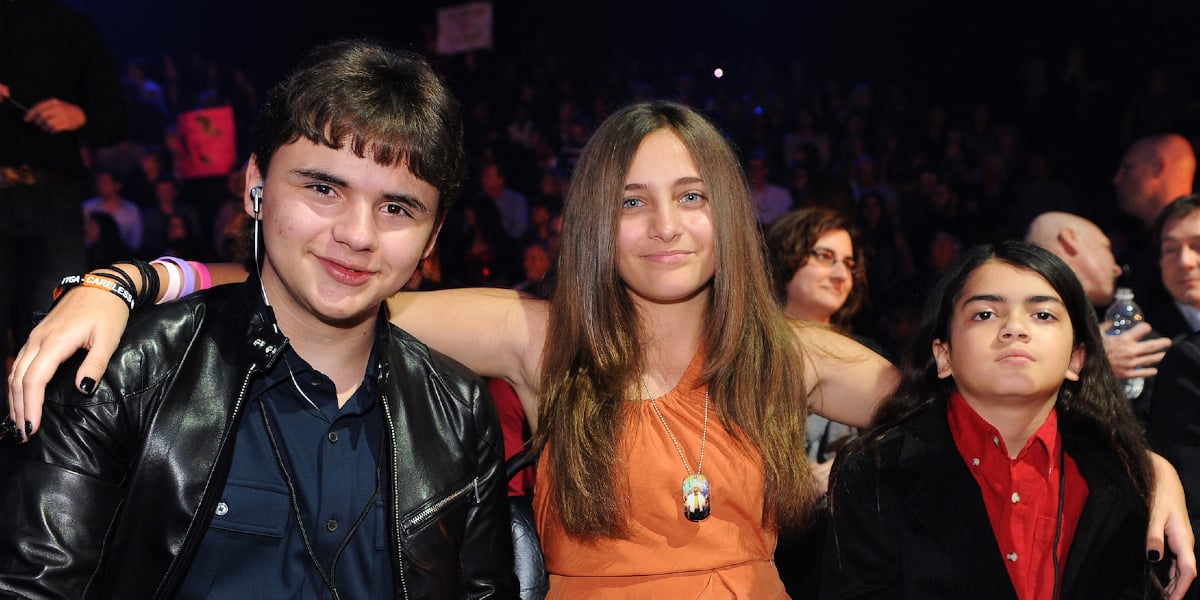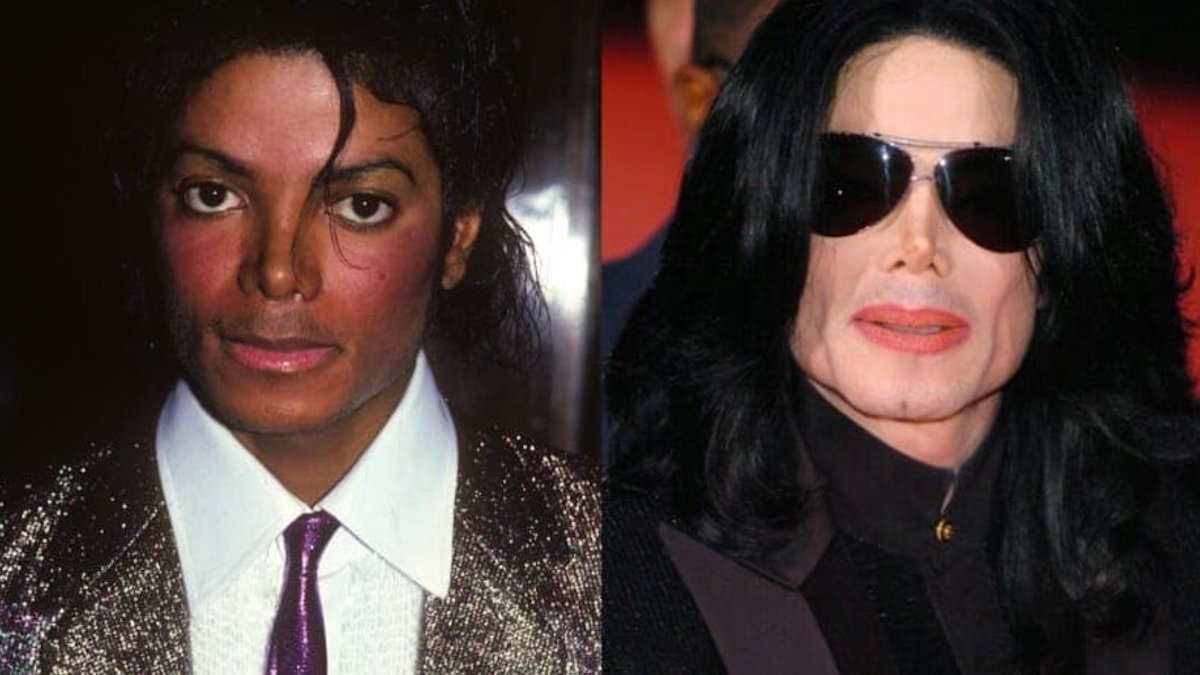Why Are Michael's Kids White? A Look At The Facts
Why are Michael's kids white? This question, often posed with a mixture of curiosity, confusion, and sometimes, outright skepticism, delves into the complex interplay of biology, identity, and the unique circumstances surrounding their upbringing.
The inquiry touches upon deeply personal matters, igniting discussions about race, adoption, and the various ways families are formed in the modern world. To understand the context of this question, it's essential to consider the individuals involved, their familial connections, and the societal lens through which their lives are often viewed. The answer, as it often is with complex social phenomena, isn't a simple one; it's a tapestry woven with threads of genetics, choice, and the enduring power of love and family. Understanding the intricacies of this situation requires exploring the specifics, respecting privacy, and approaching the subject with sensitivity and a dedication to factual accuracy. Moreover, it provides an opportunity to examine societal perceptions and biases related to race and family structure.
To delve deeper, lets examine the factors at play. The answer to the initial question, "Why are Michael's kids white?" hinges primarily on the circumstances of their birth or adoption. If the children were born to white biological parents or adopted from white families, the reason for their complexion is straightforward: genetics. The biological inheritance from their parents dictates their physical characteristics, including skin tone. However, the question often carries undertones that hint at a deeper curiosity, a desire to understand the story behind the family. This is where the complexities of adoption, blended families, and the ever-evolving definition of family come into play.
In cases of adoption, the racial and ethnic background of the adoptive parents and the adopted child are often different. This diversity within a family is a reflection of the globalized world and the increasing acceptance of diverse family structures. These choices represent love, commitment, and the belief that family transcends biological ties. The children, irrespective of their skin color, grow up with the values, traditions, and love instilled by their parents. Society, however, has a habit of making assumptions based on appearance, which can lead to misunderstandings or, at worst, prejudice. It's vital to remember that a child's identity isn't solely determined by their skin color; it's shaped by their upbringing, their experiences, and the relationships that nurture them. Therefore, a family's composition is a testament to the power of love and resilience.
The exploration of this subject should also consider the societal factors that influence perceptions. Western societies, in particular, have historically held rigid views about race and family, which has often resulted in misunderstandings and biases. The legacy of slavery, segregation, and systemic racism has created a society in which racial differences are often emphasized. These biases can manifest in various ways, from casual comments to more overt forms of discrimination. Challenging these biases requires education, empathy, and a willingness to question assumptions. It's crucial to recognize that families come in a variety of shapes and sizes, and that love and connection, rather than race, are the defining factors of a family unit. Embracing diversity enriches society and promotes understanding among people from all walks of life.
Here's a table summarizing pertinent biographical and professional information, where available and appropriate, to provide context regarding the individuals involved (Note: This table is hypothetical and intended for illustrative purposes. Actual details would need to be based on verified information.):
| Category | Information |
|---|---|
| Name(s) of Person(s) of Interest | Michael (Assuming the subject of the question) and his Children (Names would be included if available) |
| Birth/Adoption Details of Children | (Details such as birth parents' race, adoption agency, etc., if publicly available and relevant) |
| Known Relationship to "Michael" | Father/Adoptive Father/Guardian (Based on available information) |
| Age and Date of Birth (Children, if applicable and available) | (If publicly known) |
| Education (Michael and Children, if applicable and available) | (If publicly known) |
| Career (Michael, if applicable and available) | (If publicly known) |
| Residence(s) | (City, State, if publicly known or verifiable) |
| Known Affiliations/Organizations | (If applicable and publicly available) |
| Notable Achievements/Awards (If applicable) | (If publicly known) |
| Public Image/Media Presence | (Brief description, if applicable and verifiable) |
| Reference Website (for Verification) | Example.com (Replace with an authentic, verifiable source if possible; e.g., a news article, official website, etc.) |
Moving beyond the immediate question, it's important to consider the broader implications of such inquiries. Often, they reflect underlying biases or assumptions about family structures and racial identity. It's crucial to approach these conversations with empathy and a willingness to challenge one's own preconceived notions. The assumption that a family "should" look a certain way is, in itself, a form of prejudice. Families come in all shapes and sizes, and the love and support provided within those families is what truly matters.
The media, too, plays a crucial role in shaping public perception. The representation of diverse families in television, movies, and news outlets can help to normalize different family structures and challenge stereotypes. When people from various backgrounds are represented, it encourages greater empathy and understanding. On the other hand, the underrepresentation or misrepresentation of families can perpetuate harmful biases. It is the responsibility of media producers and journalists to ensure that a variety of family structures are portrayed accurately and respectfully.
Furthermore, the exploration of this topic can serve as a valuable educational tool. It can be used to teach children about diversity, acceptance, and the importance of judging people based on their character, rather than their appearance. These are essential lessons for a world that is increasingly interconnected. The conversations are a chance to challenge the status quo and contribute to a more inclusive society. Children are very observant and absorb the attitudes around them, so its crucial that adults approach such conversations with sensitivity and understanding.
The question, "Why are Michael's kids white?" is not merely a question of genetics or circumstance; it's a window into broader societal attitudes. It prompts us to reflect on our biases, challenge our assumptions, and celebrate the beautiful diversity that exists within families and communities around the world. Ultimately, the answer lies in recognizing that family is not defined by color, but by love, commitment, and the shared experience of life. The true measure of a family is not in its outward appearance, but in the bonds that unite its members.
The journey of parenting, especially in a context where there are differences in racial or ethnic background, can offer unique challenges and rewards. It requires a conscious effort to address societal biases, teach children about their heritage (if applicable), and create a supportive environment where they feel loved, accepted, and empowered. It is a chance to cultivate a strong sense of identity while also acknowledging the beauty of diversity. In a society that can be divided along racial lines, this task becomes even more vital. When parents and guardians openly discuss topics related to race and ethnicity, they equip their children with the tools they need to navigate a complex world.
The families we see in our communities and those we see in the media are a testament to the resilience of the human spirit. There are a lot of people embracing the idea of family, despite the challenges they might face. The questions we ask, and the way we approach them, reflect our understanding of the world. It's an opportunity to build a society that is marked by empathy, understanding, and a commitment to equality for all.
The childrens experiences are unique. Depending on their age, they may or may not have the knowledge about their background. As the children grow older, it is important that they gain the knowledge to understand their identities fully. These conversations can be an intimate part of a family's experience. The conversations can be used as an opportunity to celebrate the unique aspects of each individuals identity and to foster the connections within the family unit.
Societal perceptions are complex. How we view families and how we perceive those families who are different is a constant reflection of the values and biases of the society. These views are often not shared among all groups in society. These perceptions are important and they require deep reflection on the role of race in our society and how we can encourage inclusivity and understanding.
In the context of "Why are Michael's kids white?", it's important to consider the legal and ethical frameworks that govern family formation, particularly in cases of adoption. Adoption laws and regulations vary significantly across jurisdictions, impacting who can adopt, the criteria for adoption, and the processes involved. Its also important to note the increasing number of transracial adoptions, which often necessitates the consideration of cultural sensitivity and the specific needs of the child.
These various topics serve as reminders to us all that family comes in many shapes and sizes, and that the love, care, and guidance we give to our children are what really matters. The children should be surrounded by a network of support and be given the resources they need to have a full understanding of themselves and their place in the world. This includes their heritage, their traditions, and the history of their families.
The evolution of societal views on race, family structures, and adoption continues to shift, with ongoing conversations about diversity, inclusion, and the rights of children. This ongoing dialogue prompts a critical analysis of historical biases and encourages a commitment to creating a more just and equitable society. It also encourages us to reflect on our own biases and to challenge the stereotypes that we may hold.
The fundamental question, "Why are Michael's kids white?" is a launching point for a deeper dive into the complexities of family, identity, and society. The answer encourages discussions of biology, adoption, and the ways families are formed. It is essential to consider the individual's circumstances and social perceptions. Approaching the topic with empathy, sensitivity, and accuracy is of utmost importance. It's a reflection on the enduring strength of family bonds, regardless of race or origin.



